
Bruno Giussani (left) and Chris Anderson co-host “We the Future,” a day of talks presented by TED, the Skoll Foundation and the United Nations Foundation, at the TED World Theater in New York City, September 25, 2018. (Photo: Ryan Lash / TED)
We live in contentious times. Yet behind the dismaying headlines and social-media-fueled quarrels, people around the world — millions of them — are working unrelentingly to solve problems big and small, dreaming up new ways to expand the possible and build a better world.
At “We the Future,” a day of talks at the TED World Theater presented in collaboration with the Skoll Foundation and the United Nations Foundation, 13 speakers and two performers explored some of our most difficult collective challenges — as well as emerging solutions and strategies for building bridges and dialogue.
Updates on the Sustainable Development Goals. Are we delivering on the promises of the Sustainable Development Goals (SDGs), the collection of 17 global goals set by the United Nations General Assembly in 2015, which promised to improve the lives of billions with no one left behind? Using the Social Progress Index, a measure of the quality of life in countries throughout the world, economist Michael Green shares a fresh analysis of where we are today in relationship to the goals — and some new thinking on what we need to do differently to achieve them. While we’ve seen progress in some parts of the world on goals related to hunger and healthy living, the world is projected to fall short of achieving the ambitious targets set by the SDGs for 2030, according to Green’s analysis. If current trends keep up — especially the declines we’re seeing in things like personal rights and inclusiveness across the world — we actually won’t hit the 2030 targets until 2094. So what can we do about this? Two things, says Green: We need to call out rich countries that are falling short, and we need to look further into the data and find opportunities to progress faster. Because progress is happening, and we’re tantalizingly close to a world where nobody dies of things like hunger and malaria. “If we can focus our efforts, mobilize the resources, galvanize the political will,” Green says, “that step change is possible.”
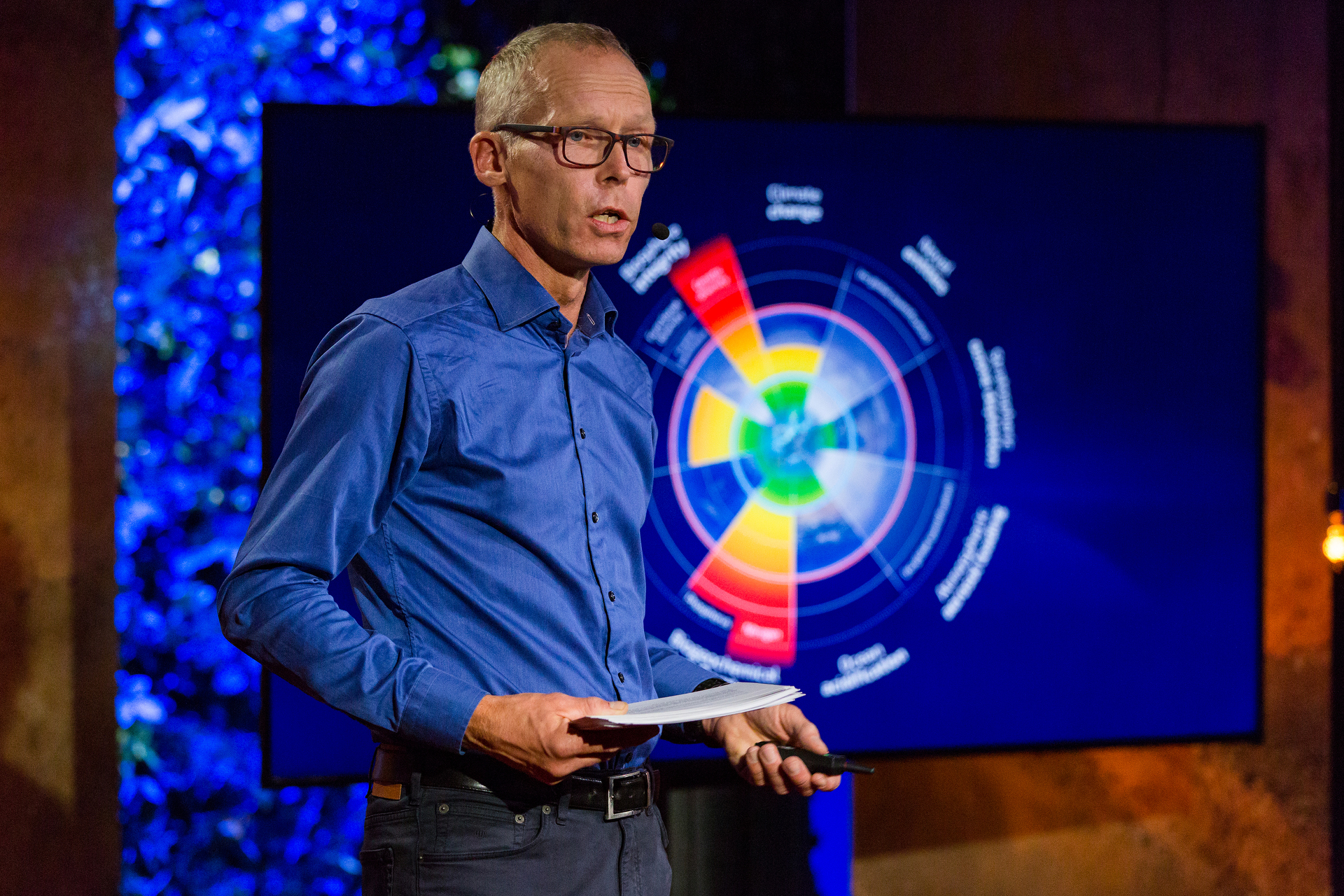
Sustainability expert Johan Rockström debuts the Earth-3 model, a new way to track both the Sustainable Development Goals and the health of the planet at the same time. He speaks at “We the Future.” (Photo: Ryan Lash / TED)
A quest for planetary balance. In 2015, we saw two fantastic global breakthroughs for humanity, says sustainability expert Johan Rockström — the SDGs and the Paris Agreement. But are the two compatible, and can be they be pursued at the same time? Rockström suggests there are inherent contradictions between the two that could lead to irreversible planetary instability. Along with a team of scientists, he created a way to combine the SDGs within the nine planetary boundaries (things like ocean acidification and ozone depletion); it’s a completely new model of possibility — the Earth-3 model — to track trends and simulate future change. Right now, we’re not delivering on our promises to future generations, he says, but the window of success is still open. “We need some radical thinking,” Rockström says. “We can build a safe and just world: we just have to really, really get on with it.”
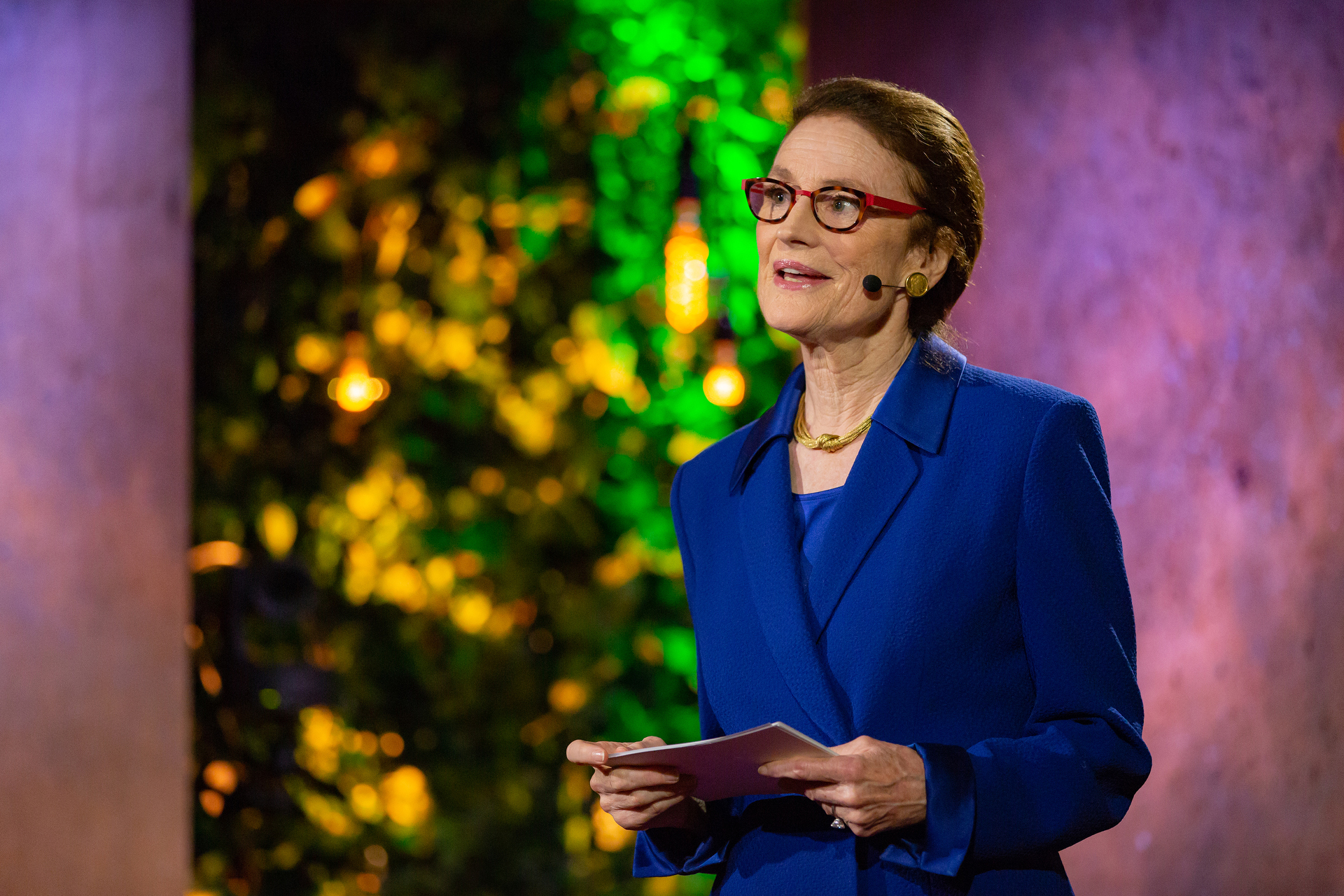
Henrietta Fore, executive director of UNICEF, is spearheading a new global initiative, Generation Unlimited, which aims to ensure every young person is in school, training or employment by 2030. She speaks at “We the Future.” (Photo: Ryan Lash / TED)
A plan to empower Generation Unlimited. There are 1.8 billion young people between the ages of 10 and 24 in the world, one of the largest cohorts in human history. Meeting their needs is a big challenge — but it’s also a big opportunity, says the executive director of UNICEF, Henrietta Fore. Among the challenges facing this generation are a lack of access to education and job opportunities, exposure to violence and, for young girls, the threats of discrimination, child marriage and early pregnancy. To begin addressing these issues, Fore is spearheading UNICEF’s new initiative, Generation Unlimited, which aims to ensure every young person is in school, learning, training or employment by 2030. She talks about a program in Argentina that connects rural students in remote areas with secondary school teachers, both in person and online; an initiative in South Africa called Techno Girls that gives young women from disadvantaged backgrounds job-shadowing opportunities in the STEM fields; and, in Bangladesh, training for tens of thousands of young people in trades like carpentry, motorcycle repair and mobile-phone servicing. The next step? To take these ideas and scale them up, which is why UNICEF is casting a wide net — asking individuals, communities, governments, businesses, nonprofits and beyond to find a way to help out. “A massive generation of young people is about to inherit our world,” Fore says, “and it’s our duty to leave a legacy of hope for them — but also with them.”
Improving higher education in Africa. There’s a teaching and learning crisis unfolding across Africa, says Patrick Awuah, founder and president of Ashesi University. Though the continent has scaled up access to higher education, there’s been no improvement in quality or effectiveness of that education. “The way we teach is wrong for today. It is even more wrong for tomorrow, given the challenges before us,” Awuah says. So how can we change higher education for the better? Awuah suggests establishing multidisciplinary curricula that emphasize critical thinking and ethics, while also allowing for in-depth expertise. He also suggests collaboration between universities in Africa — and tapping into online learning programs. “A productive workforce, living in societies managed by ethical and effective leaders, would be good not only for Africa but for the world,” Awuah says.
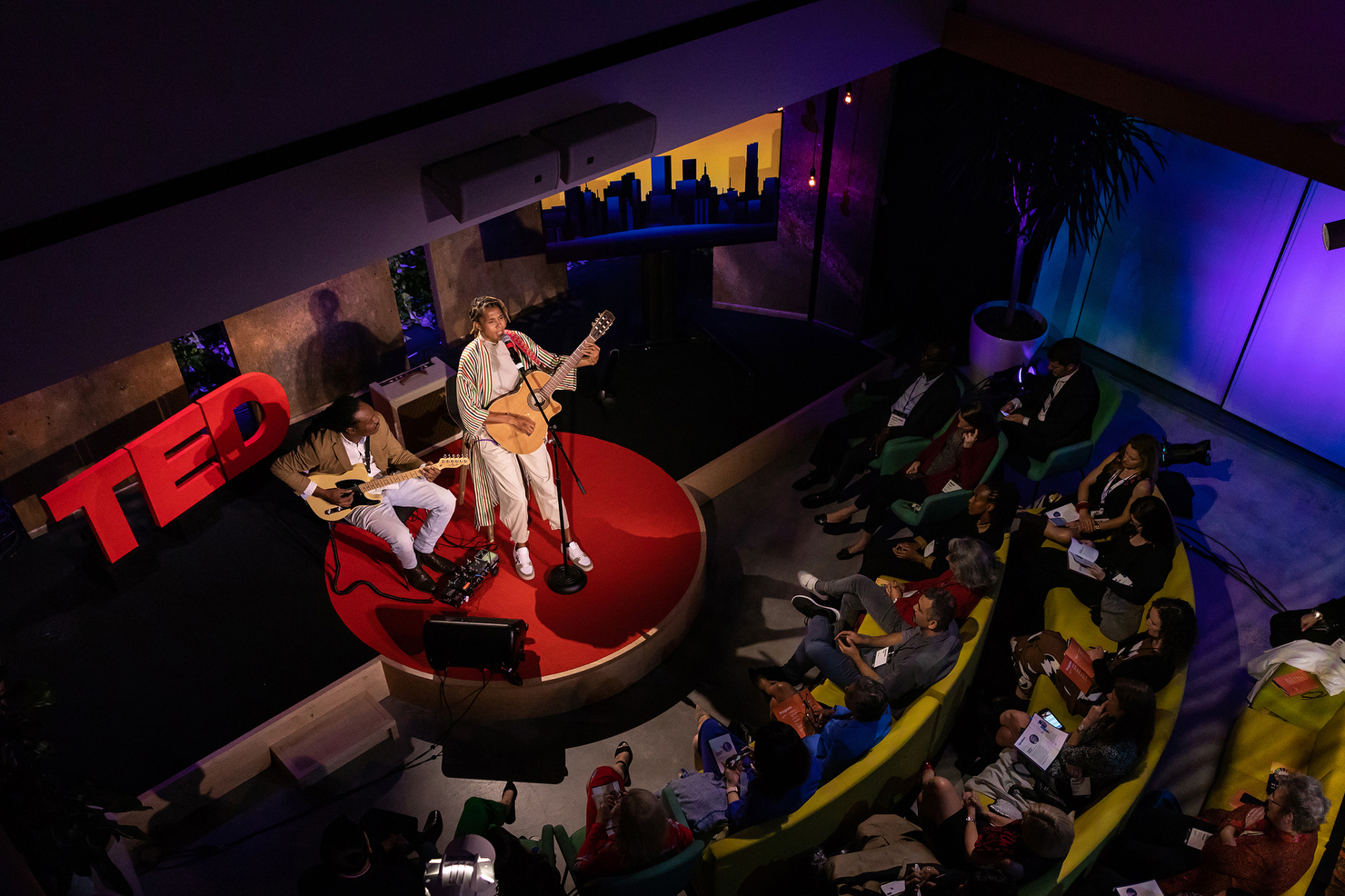
Ayọ (right) and Marvin Dolly fill the theater with a mix of reggae, R&B and folk sounds at “We the Future.” (Photo: Ryan Lash / TED)
Songs of hardship and joy. During two musical interludes, singer-songwriter Ayọ and guitarist Marvin Dolly fill the TED World Theater with the soulful, eclectic strumming of four songs — “Boom Boom,” “What’s This All About,” “Life Is Real” and “Help Is Coming” — blending reggae, R&B and folk sounds.
If every life counts, then count every life. To some, numbers are boring. But data advocate Claire Melamed says numbers are, in fact, “an issue of power and of justice.” The lives and death of millions of people worldwide happen outside the official record, Melamed says, and this lack of information leads to big problems. Without death records, for instance, it’s nearly impossible to detect epidemics until it’s too late. If we are to save lives in disease-prone regions, we must know where and when to deliver medicine — and how much. Today, technology enables us to inexpensively gather reliable data, but tech isn’t a cure-all: governments may try to keep oppressed or underserved populations invisible, or the people themselves may not trust the authorities collecting the data. But data custodians can fix this problem by building organizations, institutions and communities that can build trust. “If every life counts, we should count every life,” Melamed says.
How will the US respond to the rise of China? To Harvard University political scientist Graham Allison, recent skirmishes between the US and China over trade and defense are yet another chapter unfolding in a centuries-long pattern. He’s coined the term “Thucydides’ Trap” to describe it — as he puts it, the Trap “is the dangerous dynamic that occurs when a rising power threatens to displace a ruling power.” Thucydides is viewed by many as the father of history; he chronicled the Peloponnesian Wars between a rising Athens and a ruling Sparta in the 4th century BCE (non-spoiler alert: Sparta won, but at a high price). Allison and colleagues reviewed the last 500 years and found Thucydides’ Trap 16 times — and 12 of them ended in war. Turning to present day, he notes that while the 20th century was dominated by the US, China has risen far and fast in the 21st. By 2024, for instance, China’s GDP is expected to be one-and-a-half times greater than America’s. What’s more, both countries are led by men who are determined to be on top. “Are Americans and Chinese going to let the forces of history draw us into a war that would be catastrophic to both?” Allison asks. To avoid it, he calls for “a combination of imagination, common sense and courage” to come up with solutions — referencing the Marshall Plan, the World Bank and United Nations as fresh approaches toward prosperity and peace that arose after the ravages of war. After the talk, TED curator Bruno Giussani asks Allison if he has any creative ideas to sidestep the Trap. “A long peace,” Allison says, turning again to Athens and Sparta for inspiration: during their wars, the two agreed at one point to a 30-year peace, a pause in their conflict so each could tend to their domestic affairs.
Can we ever hope to reverse climate change? Researcher and strategist Chad Frischmann introduces the idea of “drawdown” — the point at which we remove more greenhouse gases from the atmosphere than we put in — as our only hope of averting climate disaster. At his think tank, he’s working to identify strategies to achieve drawdown, like increased use of renewable energy, better family planning and the intelligent disposal of HFC refrigerants, among others. But the things that will make the biggest impact, he says, are changes to food production and agriculture. The decisions we make every day about the food we grow, buy and eat are perhaps the most important contributions we could make to reversing global warming. Another focus area: better land management and rejuvenating forests and wetlands, which would expand and create carbon sinks that sequester carbon. When we move to fix global warming, we will “shift the way we do business from a system that is inherently exploitative and extractive to a ‘new normal’ that is by nature restorative and regenerative,” Frischmann says.
The end of energy poverty. Nearly two billion people worldwide lack access to modern financial services like credit cards and bank accounts — making it difficult to do things like start a new business, build a nest egg, or make a home improvement like adding solar panels. Entrepreneur Lesley Marincola is working on this issue with Angaza, a company that helps people avoid the steep upfront costs of buying a solar-power system, instead allowing them to pay it off over time. With metering technology embedded in the product, Angaza uses alternative credit scoring methods to determine a borrower’s risk level. The combination of metering technology and an alternative method of assessing credit brings purchasing power to unbanked people. “To effectively tackle poverty at a global scale, we must not solely focus on increasing the amount of money that people earn,” Marincola says. “We must also increase or expand the power of their income through access to savings and credit.”
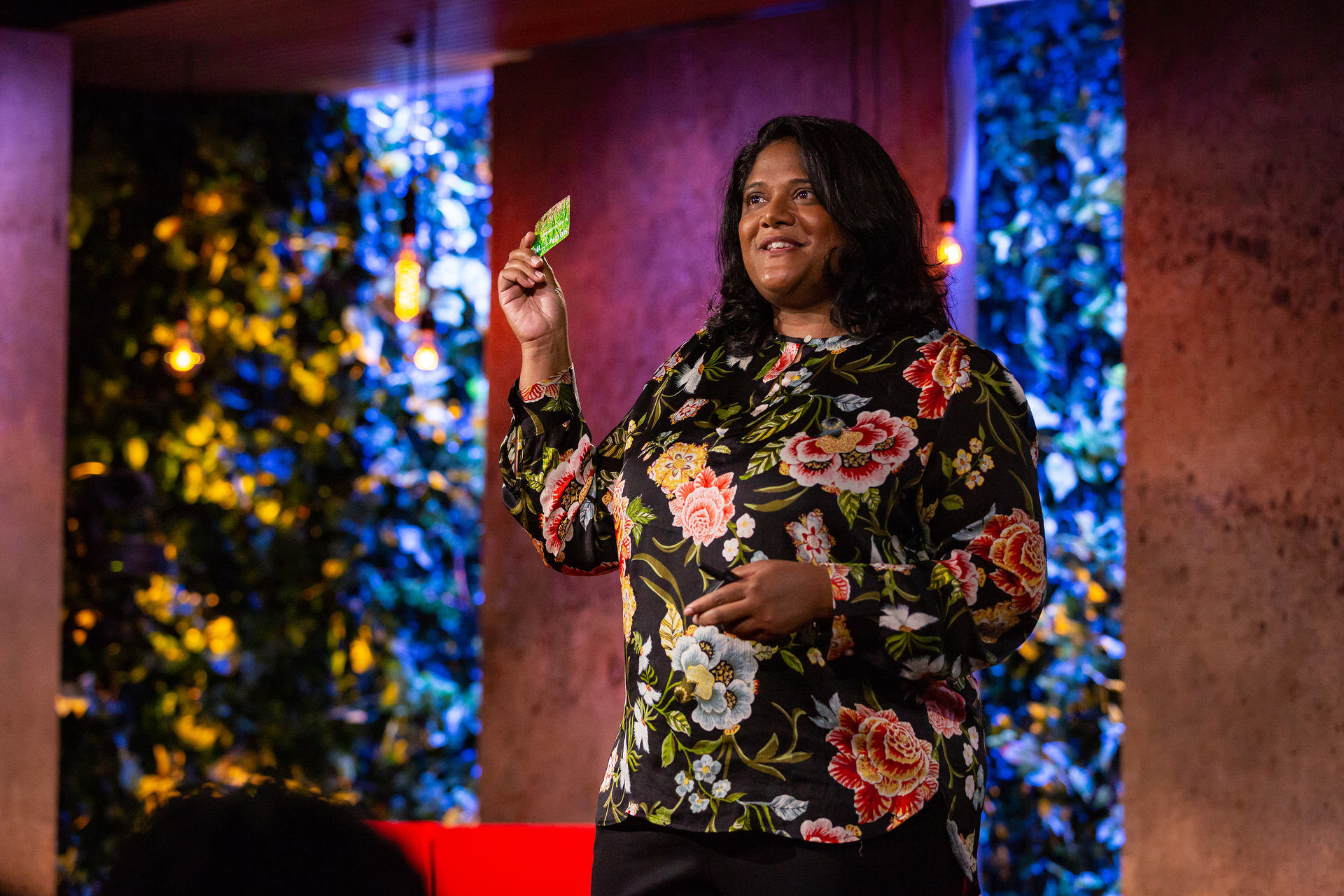
Anushka Ratnayake displays one of the scratch-off cards that her company, MyAgro, is using to help farmers in Africa break cycles of poverty and enter the cycle of investment and growth. She speaks at “We the Future.” (Photo: Ryan Lash / TED)
An innovative way to help rural farmers save. While working for a microfinance company in Kenya, Anushka Ratnayake realized something big: small-scale farmers were constantly being offered loans … when what they really wanted was a safe place to save money. Collecting and storing small deposits from farmers was too difficult and expensive for banks, and research from the University of California, Berkeley shows that only 14–21 percent of farmers accept credit offers. Ratnayake found a simpler solution — using scratch-off cards that act as a layaway system. MyAgro, a nonprofit social enterprise that Ratnayake founded and leads, helps farmers save money for seeds. Farmers buy myAgro scratch cards from local stores, depositing their money into a layaway account by texting in the card’s scratch-off code. After a few months of buying the cards and saving little by little, myAgro delivers the fertilizer, seed and training they’ve paid for, directly to their farms. Following a wildly successful pilot program in Mali, MyAgro has expanded to Senegal and Tanzania and now serves more than 50,000 farmers. On this plan, rural farmers can break cycles of poverty, Ratnayake says, and instead, enter the cycle of investment and growth.
Durable housing for a resilient future. Around the world, natural disasters destroy thousands of lives and erase decades of economic gains each year. These outcomes are undeniably devastating and completely preventable, says mason Elizabeth Hausler — and substandard housing is to blame. It’s estimated that one-third of the world will be living in insufficiently constructed buildings by 2030; Hausler hopes to cut those projections with a building revolution. She shares six straightforward principles to approach the problem of substandard housing: teach people how to build, use local architecture, give homeowners power, provide access to financing, prevent disasters and use technology to scale. “It’s time we treat unsafe housing as the global epidemic that it is,” Hausler says. “It’s time to strengthen every building just like we would vaccinate every child in a public health emergency.”
A daring idea to reduce income inequality. Every newborn should enter the world with at least $25,000 in the bank. That is the basic premise of a “baby trust,” an idea conceived by economists Darrick Hamilton of The New School and William Darity of Duke University. Since 1980, inequality has been on the rise worldwide, and Hamilton says it will keep growing due to this simple fact: “It is wealth that begets more wealth.” Policymakers and the public have fallen for a few appealing but inaccurate narratives about wealth creation — that grit, education or a booming economy can move people up the ladder — and we’ve disparaged the poor for not using these forces to rise, Hamilton says. Instead, what if we gave a boost up the ladder? A baby trust would give an infant money at birth — anywhere from $500 for those born into the richest families to $60,000 for the poorest, with an average endowment of $25,000. The accounts would be managed by the government, at a guaranteed interest rate of 2 percent a year. When a child reaches adulthood, they could withdraw it for an “asset-producing activity,” such as going to college, buying a home or starting a business. If we were to implement it in the US today, a baby trust program would cost around $100 billion a year; that’s only 2 percent of annual federal expenditures and a fraction of the $500 billion that the government now spends on subsidies and credits that favor the wealthy, Hamilton says. “Inequality is primarily a structural problem, not a behavioral one,” he says, so it needs to be attacked with solutions that will change the existing structures of wealth.
Nothing about us, without us. In 2013, activist Sana Mustafa and her family were forcibly evacuated from their homes and lives as a result of the Syrian civil war. While adjusting to her new reality as a refugee, and beginning to advocate for refugee rights, Mustafa found that events aimed at finding solutions weren’t including the refugees in the conversation. Alongside a group of others who had to flee their homes because of war and disaster, Mustafa founded The Network for Refugee Voices (TNRV), an initiative that amplifies the voices of refugees in policy dialogues. TNRV has worked with the United Nations High Commissioner for Refugees and other organizations to ensure that refugees are represented in important conversations about them. Including refugees in the planning process is a win-win, Mustafa says, creating more effective relief programs and giving refugees a say in shaping their lives.
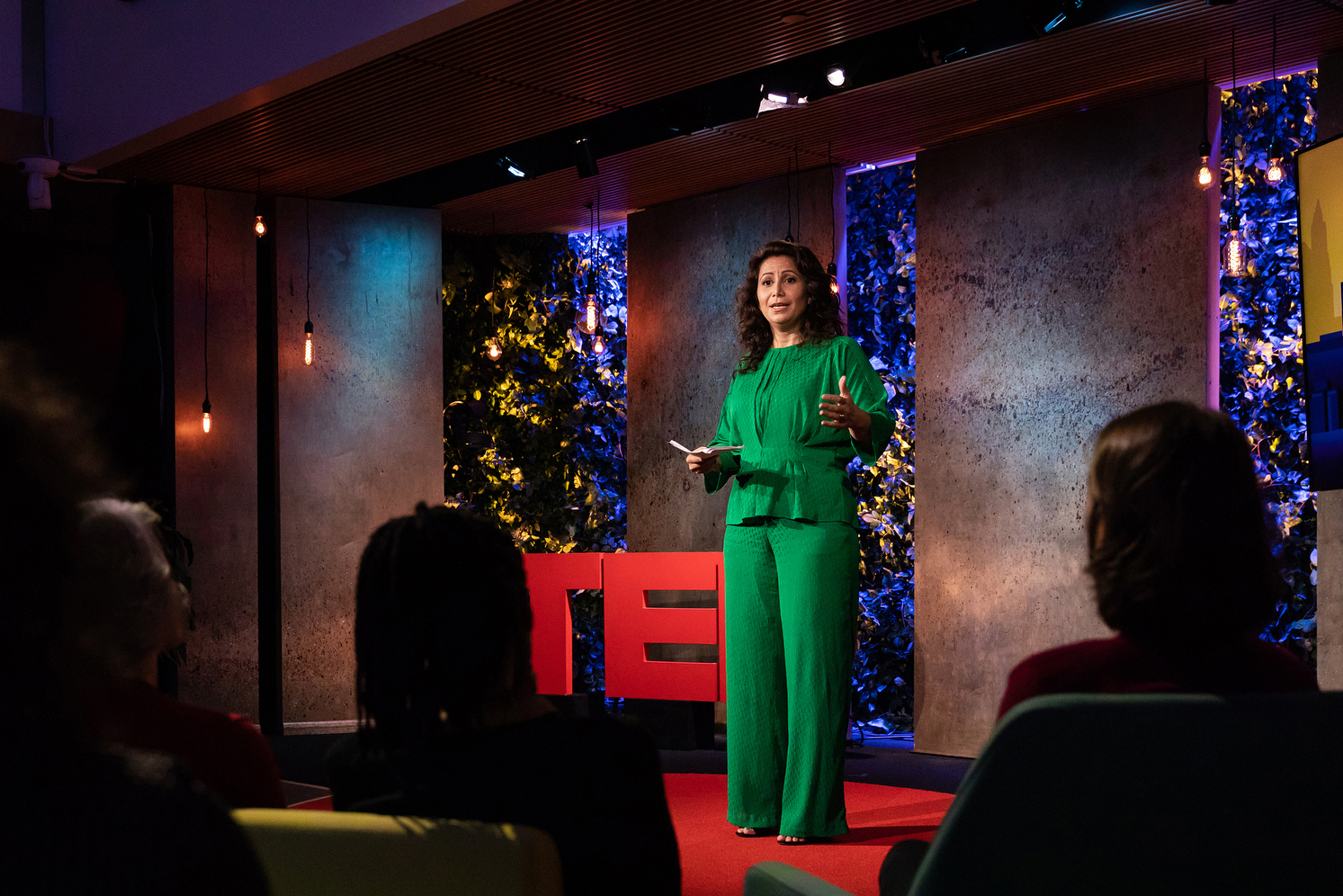
Former member of Danish Parliament Özlem Cekic has a novel prescription for fighting prejudice: take your haters out for coffee. She speaks at “We the Future.” (Photo: Ryan Lash / TED)
Conversations with people who send hate mail. Özlem Cekic‘s email inbox has been full of hate mail and personal abuse for years. She began receiving the derogatory messages in 2007, soon after she won a seat in the Danish Parliament — becoming one of the first women with a minority background to do so. At first she just deleted the emails, dismissing them as the work of the ignorant or fanatic. The situation escalated in 2010 when a neo-Nazi began to harass Cekic and her family, prompting a friend to make an unexpected suggestion: reach out to the hate mail writers and invite them out to coffee. This was the beginning of what Cekic calls “dialogue coffee”: face-to-face meetings where she sits down with people who have sent hate mail, in an effort to understand the source of their hatred. Cekic has had hundreds of encounters since 2010 — always in the writer’s home, and she always brings food — and has made some important realizations along the way. Cekic now recognizes that people of all political convictions can be caught demonizing those with different views. And she has a challenge for us all: before the end of the year, reach out to someone you demonize — who you disagree with politically or think you won’t have anything in common with — and invite them out to coffee. Don’t give up if the person refuses at first, she says: sometimes it has taken nearly a year for her to arrange a meeting. “Trenches have been dug between people, yes,” Cekic says. “But we all have the ability to build the bridges that cross the trenches.”